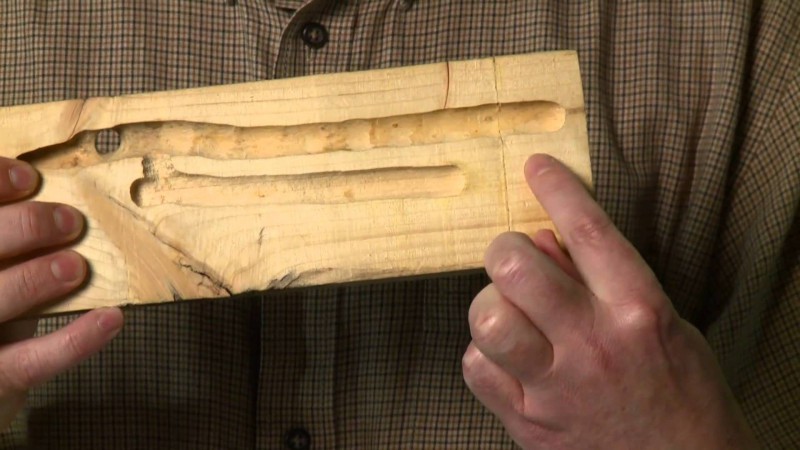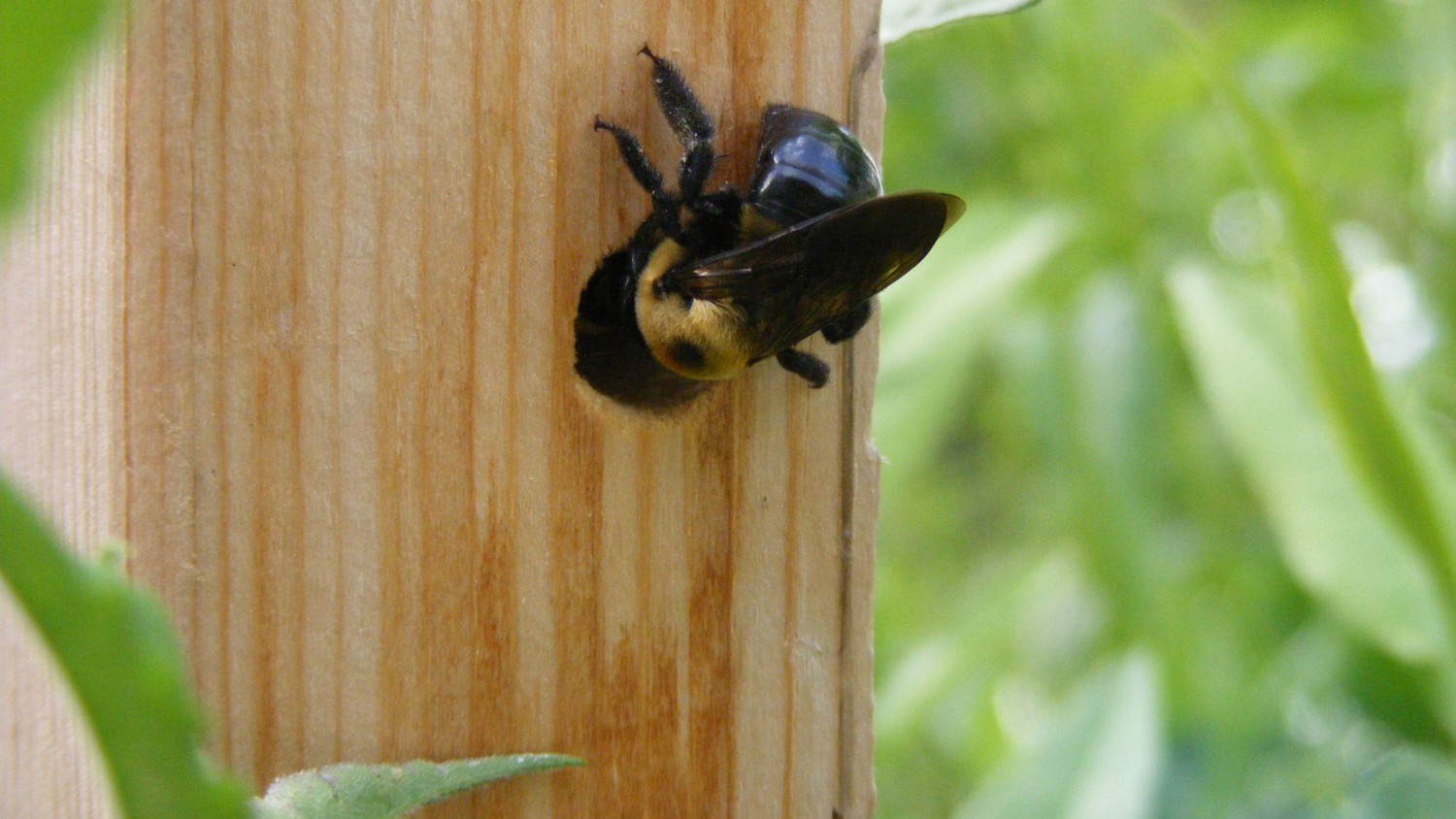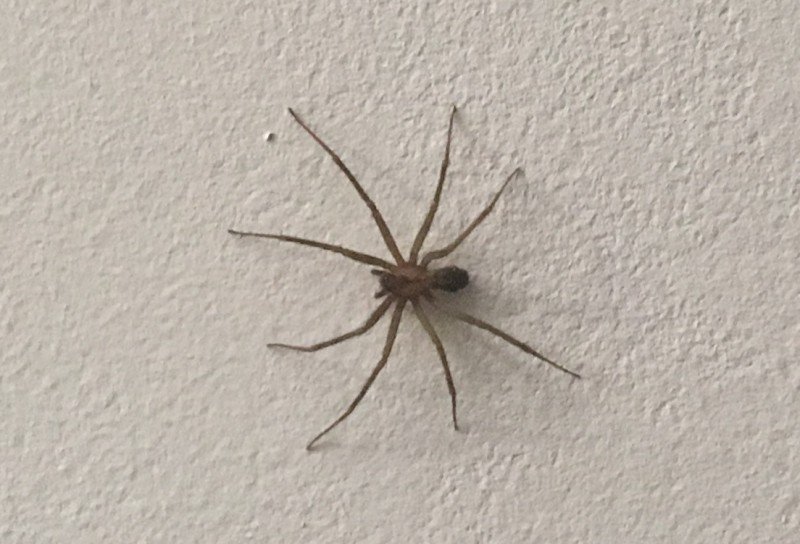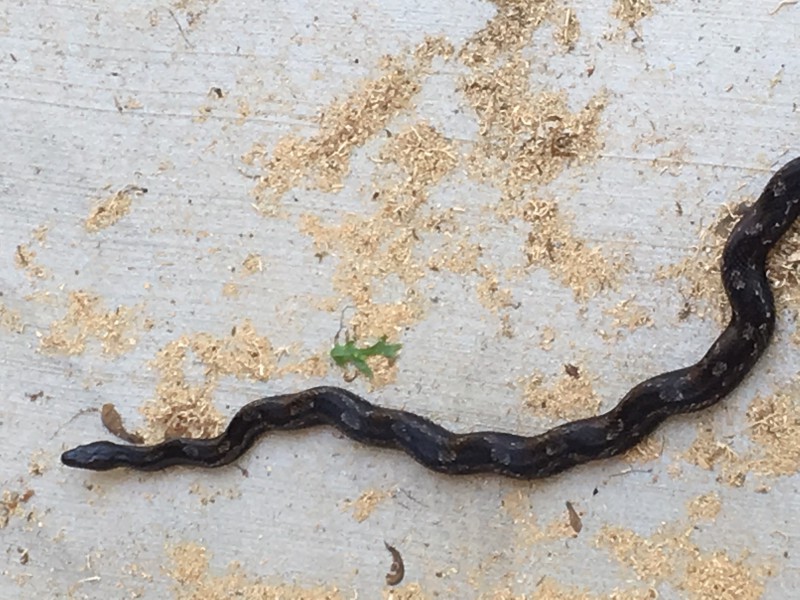Tennessee is – in my opinion – one of the most beautiful areas in the United States. It’s a large part of the reason we decided to move here. However, that lush landscape doesn’t come without drawbacks. When making the decision to move here, I definitely failed to consider the insect and spider population.
I walk through massive spiderwebs on a daily basis, often cropping up only a day after I cleared the area of webs. We probably go through two cans of bug spray every month while working on the house. Every time I pull a piece of wood off a stack, a number of insects will scurry away. I frequently see spiders, bees, and flies larger than I ever could have imagined.
But some of these have proven to be more than just nuisances. We have probably destroyed around ten mud dauber and hornet nests lodged in the eaves of house in progress. For one of the hornet nests, John managed to expertly scrape it off the ceiling and into a plastic jar. He proceeded to shake it up and throw it against the wall, breaking the container into pieces and sending us running. Fortunately, they all died in the shaking stage, or we would have had some angry wasps coming after us.
The most frustrating of the bees, however, is the carpenter bee, who make nests by tunneling into wood. They often dig straight into the side of a beam, then make a 90 degree turn and continue tunneling down the length of the wood. After breaking apart some of the affected wood, we have found some tunnels traveling more than 8 inches down the board. While I can’t help but be impressed by their skills, they are a huge menace to our building project.

An example of a carpenter bee tunnel inside a piece of wood. They enter on the side and then create long branching tunnels.
After doing some reading, we discovered that the best way to kill them is to mount a piece of wood above a jar of water, with holes leading into the jar. Ideally, the bees traverse the tunnel and end up in the jar, where they remain trapped until they die (somehow never considering going back through the hole that led them there). We made our own, but never managed to catch one this way.
The other menace we’ve been dealing with are brown recluse spiders. A month or so ago, some friends of ours were dealing with an infestation of them, and it led us to do a lot of research. While most sightings are mistaken identifications, the spiders rarely bite without provocation, and 90% of bites are asymptomatic, the sheer concept of what they are capable of makes them incredibly intimidating. Inwardly, I was relieved that they weren’t in our house.
Then a week ago, we came across two of them in our bedroom. Instead of simply squashing the second one, we put a piece of packing tape over it and analyzed everything: color, eye formation, fiddle pattern, etc. Definitively a brown recluse.
We have taking a few steps to deal with them – such as spraying our house and setting up sticky traps – but I still have a general unease. We’ve caught at least two more in the sticky trap in our bedroom, and it was enough to get me to move our bed to a room upstairs. Although the chances of the notably reclusive spider coming out to bite unprovoked is rare, I am a lot less comfortable in my own home. I no longer walk through the house at night without turning lights on, I check my comforter for spiders every evening, and I’m cautious each time I pull something out of a drawer or shelf. And for someone who’s already an insomniac, this is the last thing I need to help me sleep at night.
I can’t wait to finish building our house so we can get out of this old rental house!




My parents just went through a long process with their dog who was bitten by a Recluse Spider. He ended up having surgery to remove the necrotic tissue. Its great how you both dive in, problem solve and come to a solution. Have you had trouble with ticks?
Eek. I definitely want to avoid that.
We had a few tick bites on the road, but none since moving here. Fortunately Lyme’s disease is basically nonexistent in TN, but we do have to watch out for Rocky Mountain spotted fever.
Yup, definitely a brown recluse. But, as for your driveway guest, that is the kind you want around if there are going to be snakes around. They probably take care of more of your neighborhood rodents than you would ever know. Get to know your local snakes. You likely have venomous and non-venomous in the area. If you can ID the venomous ones on sight, you’ll be much less concerned. This one is a keeper.
Love reading about your progress & adventures in homebuilding.